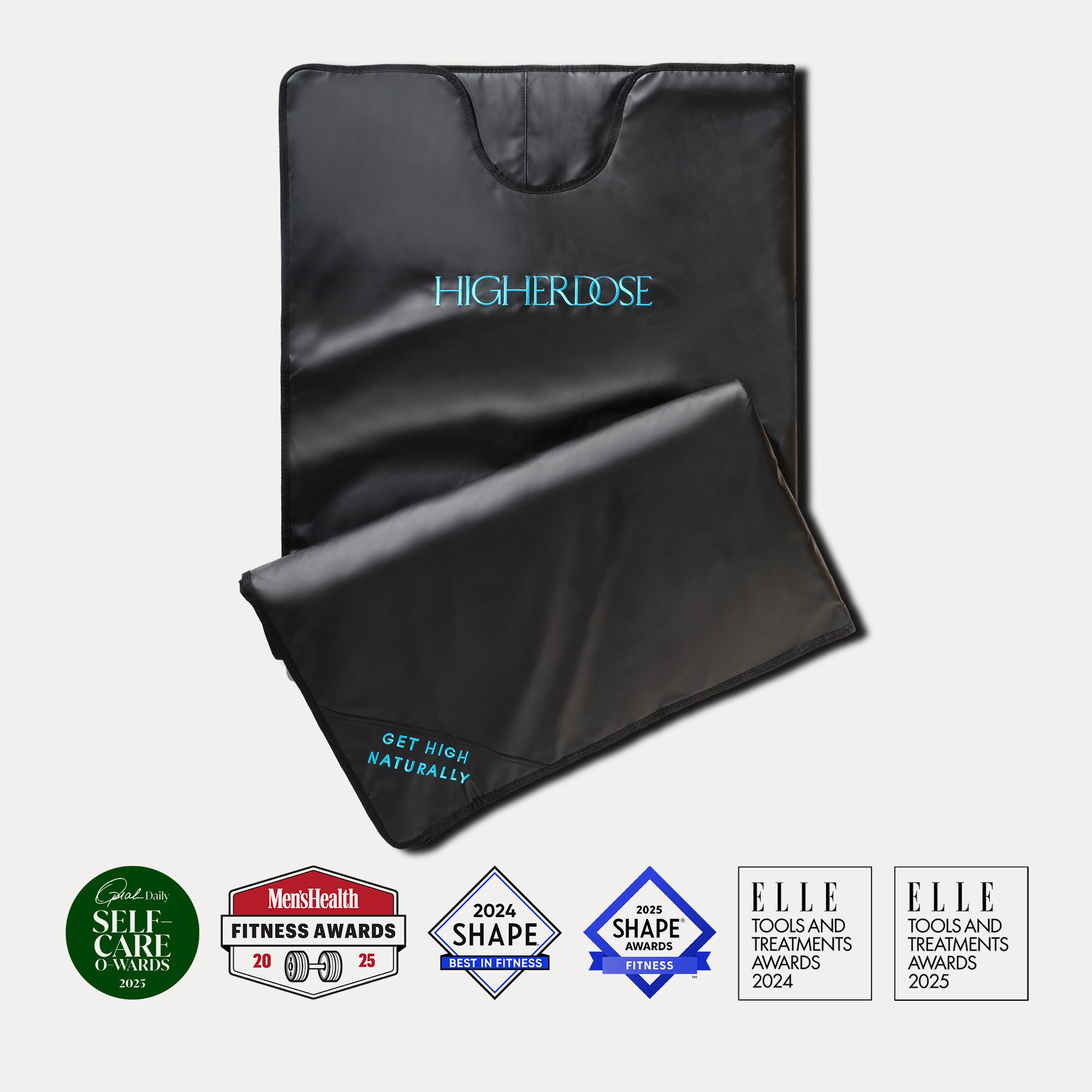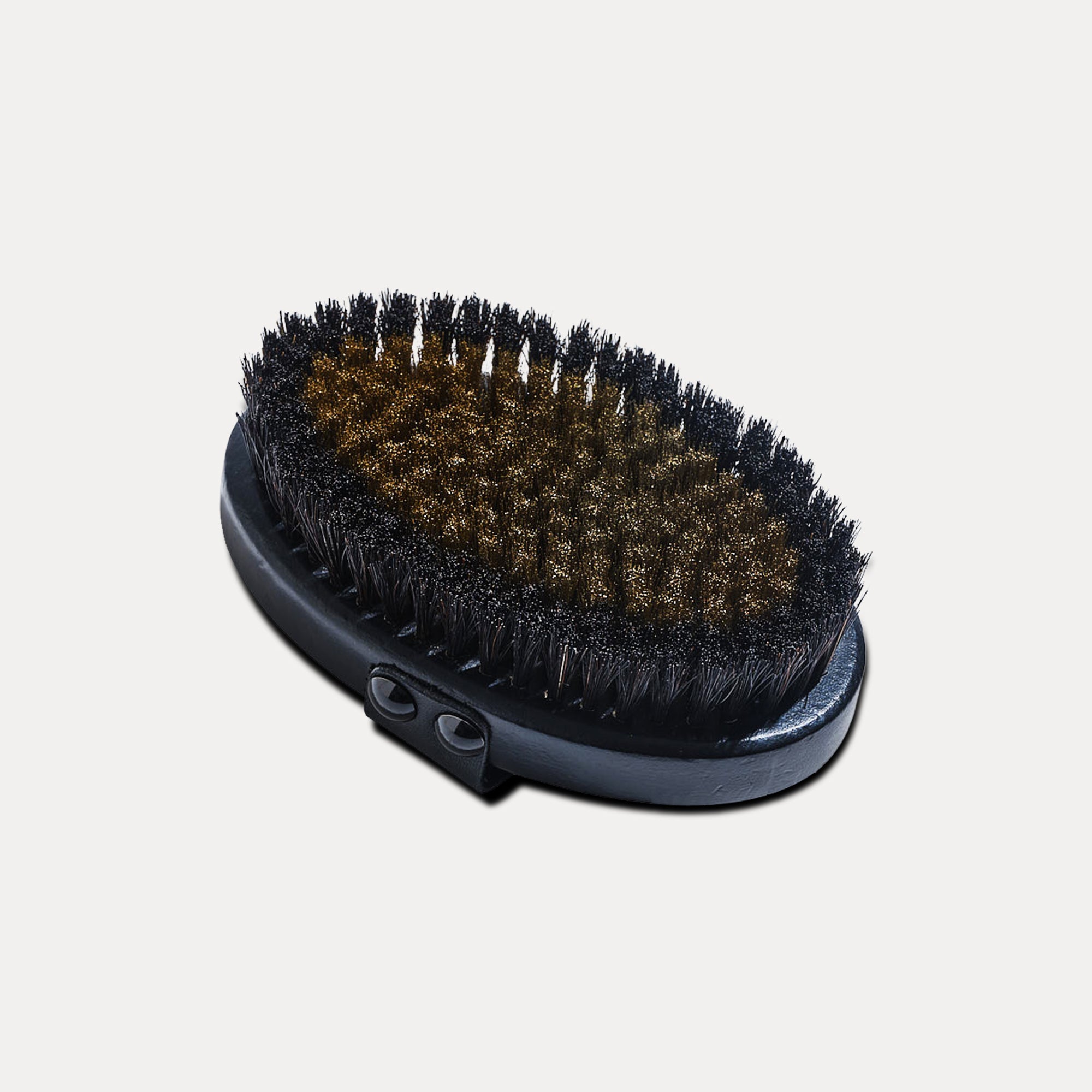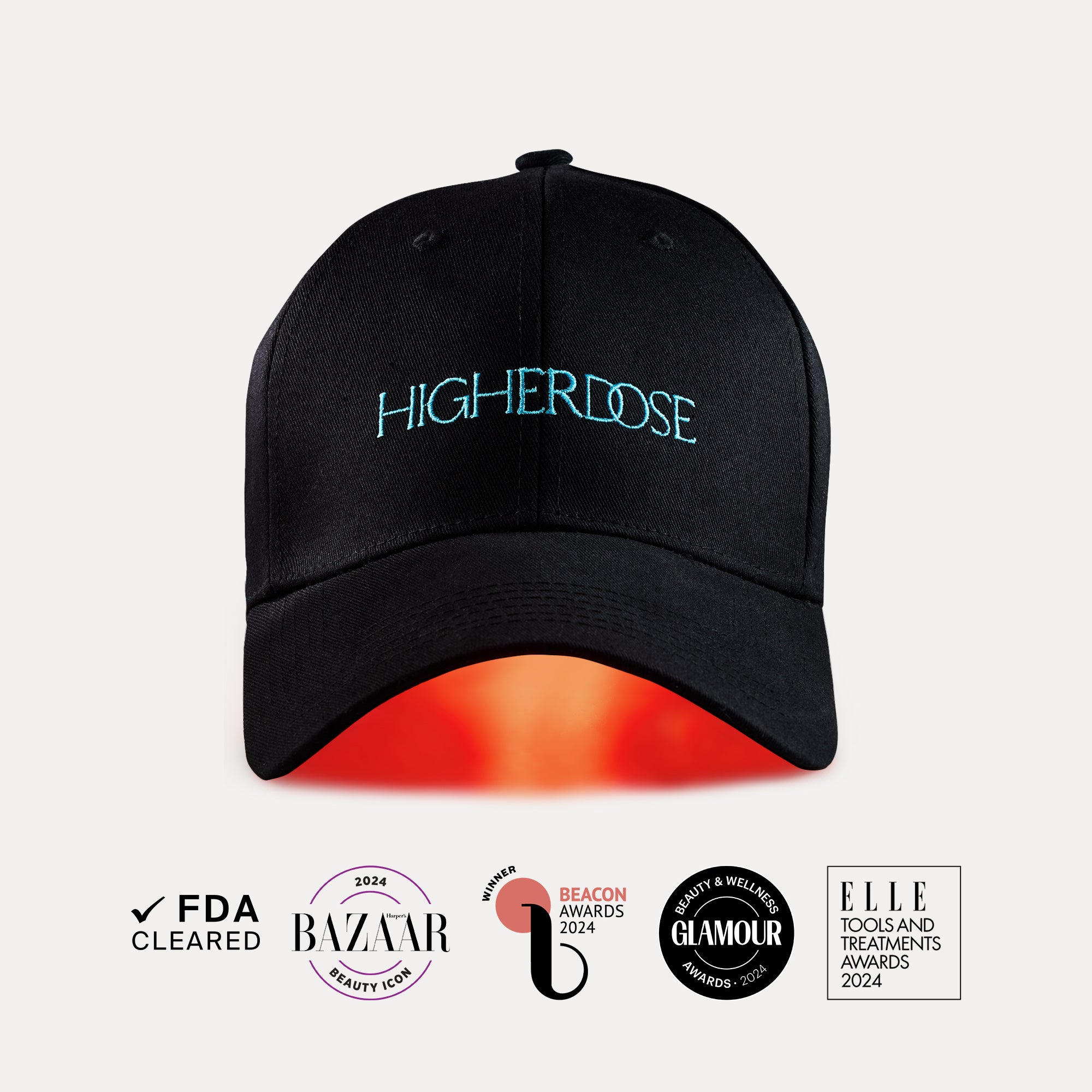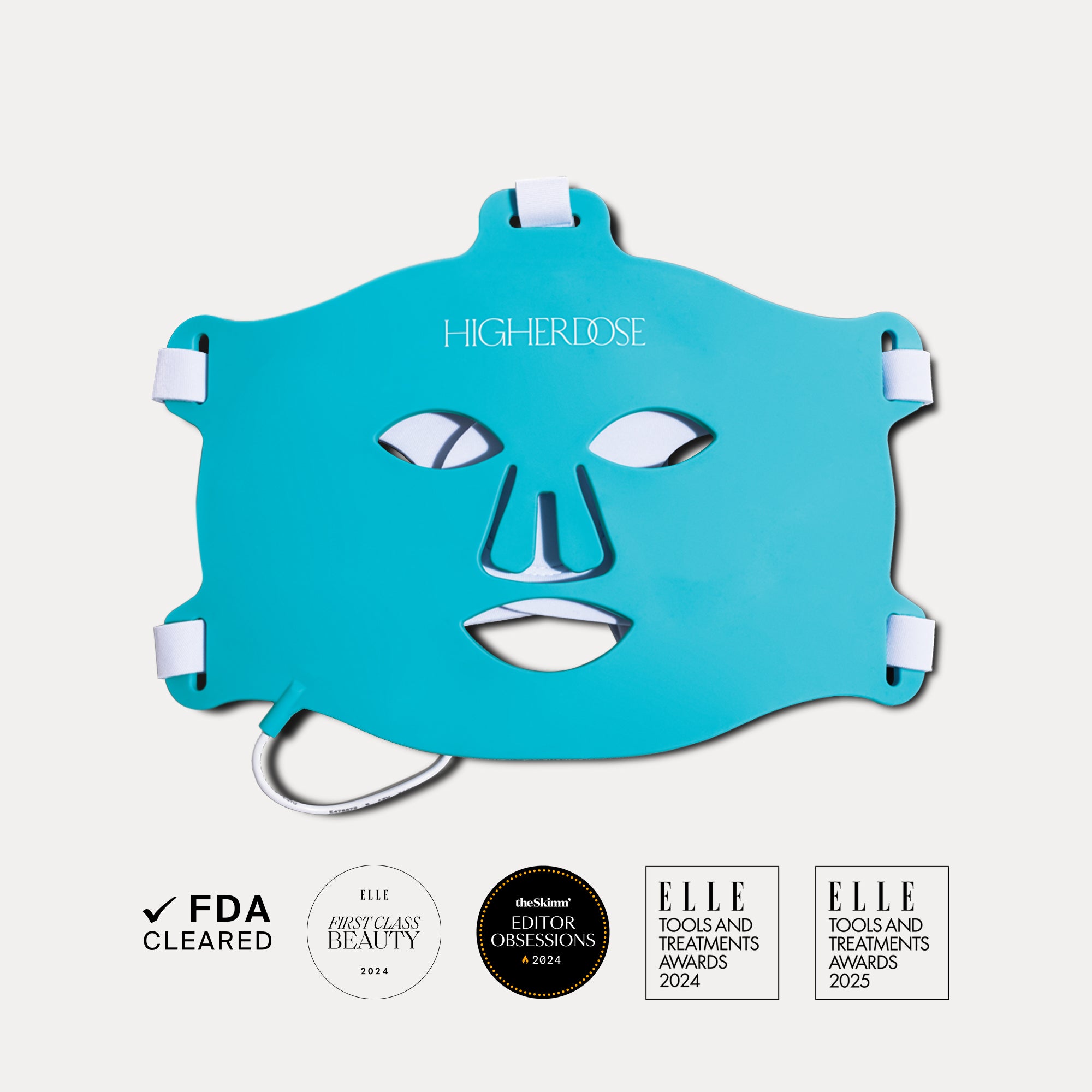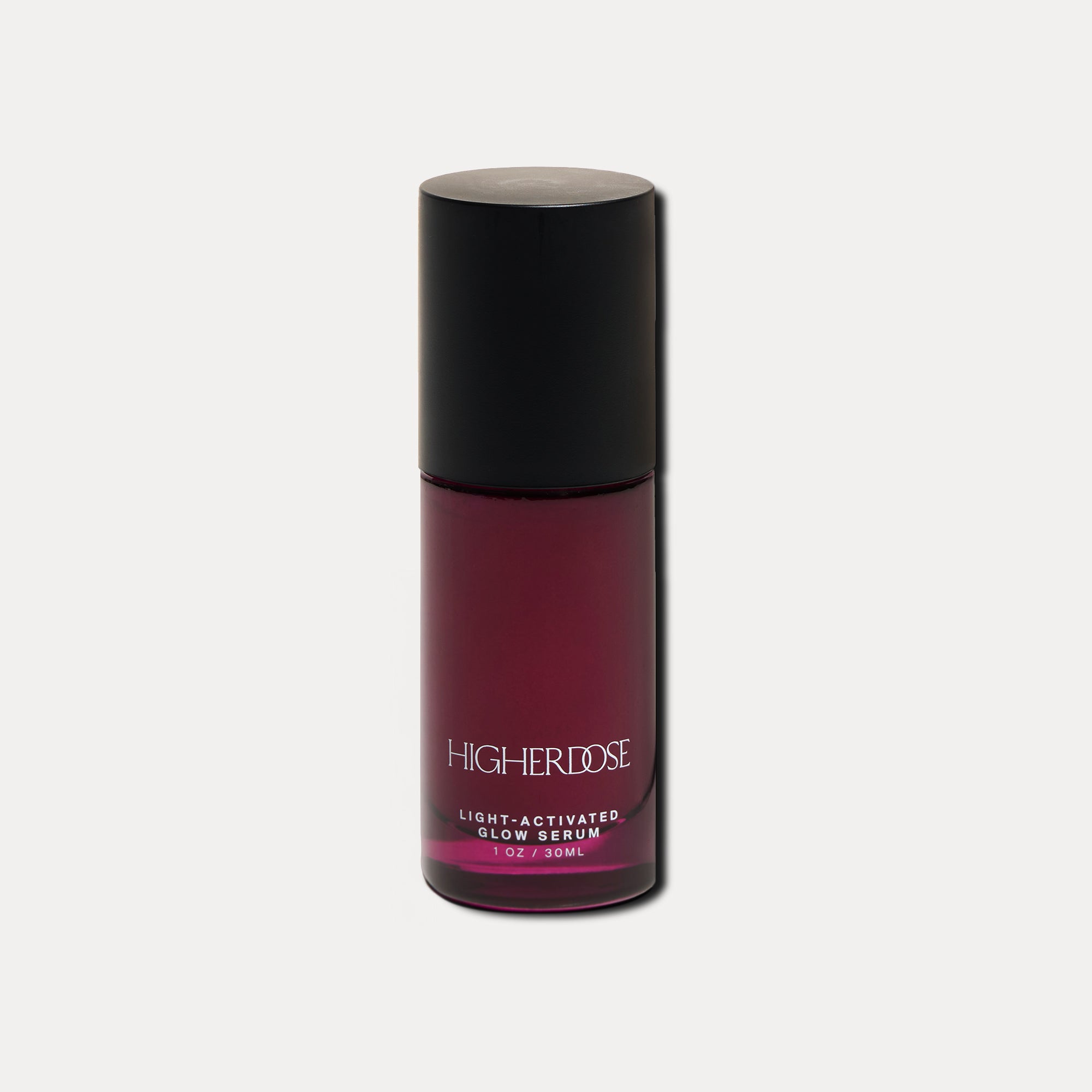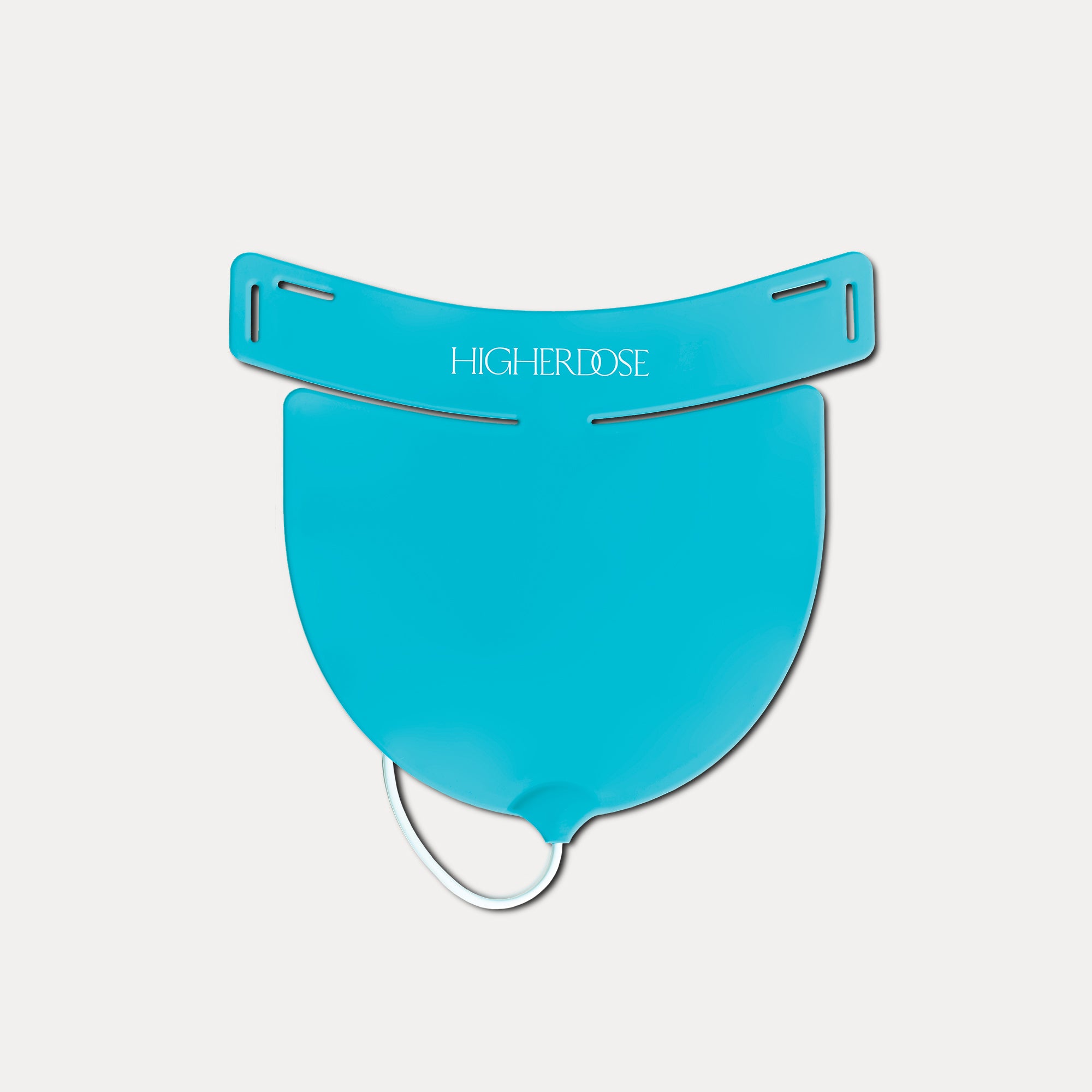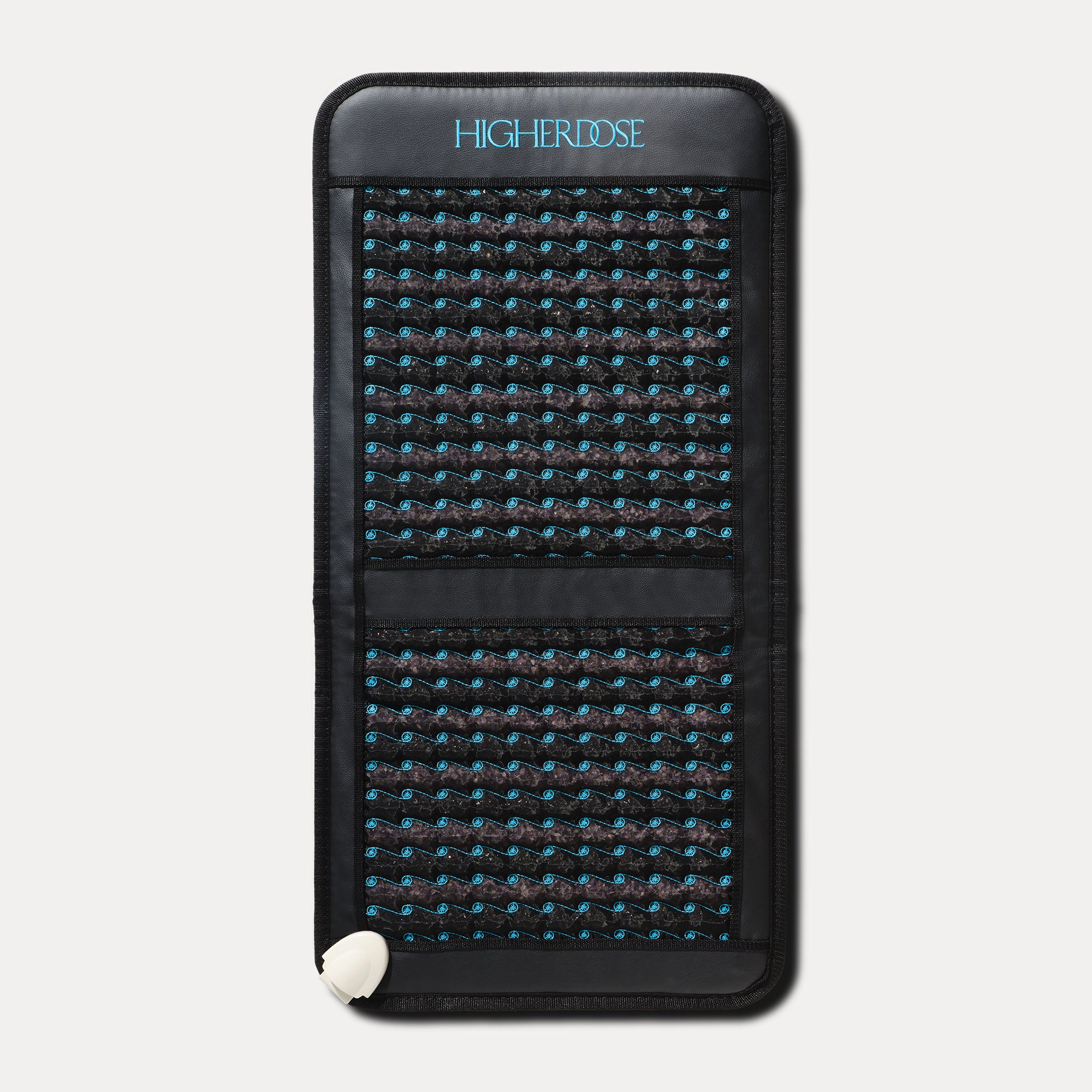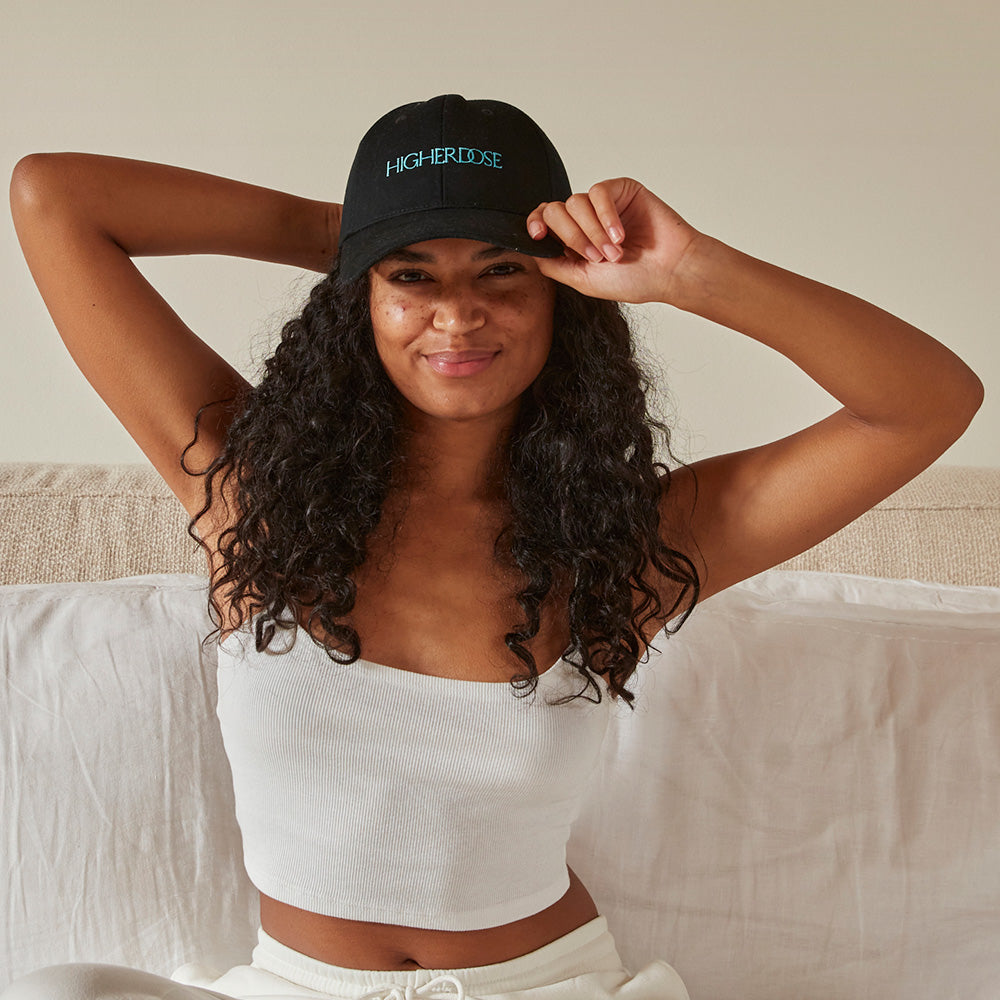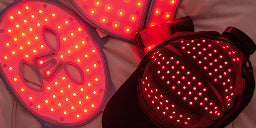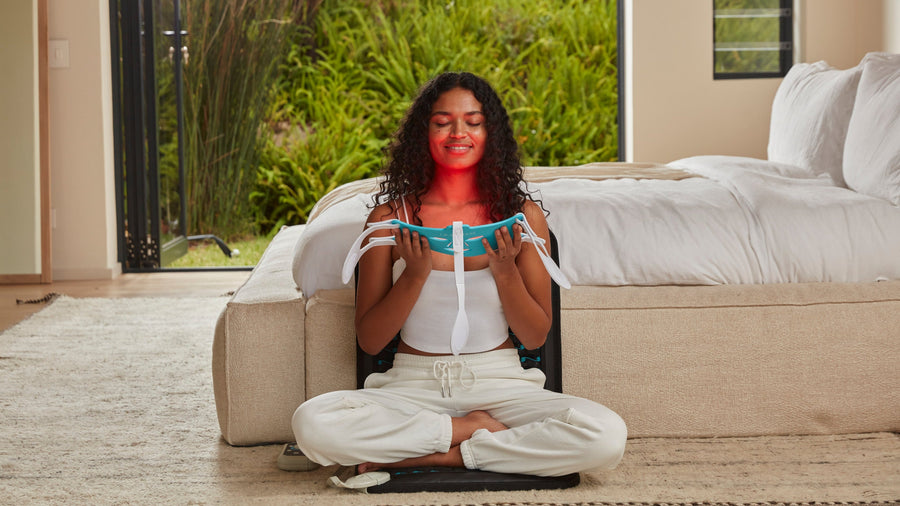
How Often To Use Red Light Therapy For Glowing Results | HigherDOSE
When To Use Red Light Therapy for The Best Results
Red light therapy has officially gone mainstream. With light now considered the new luxury in wellness, red light therapy has become a must-have, science-backed treatment in both clinical and home settings for modern beauty and wellness routines due to its skin rejuvenating benefits. Whether it’s glowing in your favorite esthetician’s studio or featured in your gym’s biohacking corner, red light therapy is showing up everywhere and for good reason. However, the question that pops up the most when building a red light ritual is how often is just right and is it truly effective?
So what is red light therapy, exactly? It’s a gentle, non-invasive treatment that uses specific red and near-infrared wavelengths to stimulate your mitochondria (aka the tiny power plants in your cells). This enhances energy, reduces inflammation, and promotes glowing skin by promoting collagen production and cellular repair and healing.
The benefits of red light have a wide range and are supported by an increasing volume of evidence. These benefits can include stimulating collagen production, reducing the appearance of fine lines and wrinkles, and decreasing inflammation and redness. Importantly, red light therapy is generally safe and the risk of any side effects is low, however, results and the overall effectiveness can vary for each individual as well as by the strength, frequency, and wavelength of the device being used. As Stanford’s dermatology specialists advise, red light therapy shows promise, but isn’t a miracle cure, so it’s best to consult a dermatologist and keep expectations realistic.
But like any good ritual, it’s not just what you do - it’s when and how often you do it that delivers real results. In this guide, we’ll break down how often to use red light therapy based on your wellness goals.
To note, more research is required for its effects on the healing of wounds and on claims such as performance in athletics and the relief of chronic pain.
How Often Should You Use Red Light Therapy?
You’ll get the best results from red light therapy when you use it 3 to 5 times a week for 10 to 20 minutes on each treatment area. This schedule has backing from clinical studies. Experts at Stanford Medicine explain that red light has an impact on cells through a process called photobiomodulation. This means certain wavelengths change how cells work at a biological level. Regular exposure boosts collagen, helps cells repair themselves, and makes your skin healthier overall. If you’re new to this, starting with this schedule lets your body get used to it while building up long-term benefits.
Your wellness goals determine how often you should use red light therapy:
-
To get glowing skin: Brief consistent sessions 3–5 times a week boost collagen and minimize aging signs. This treatment might also help with acne
-
To aid muscle recovery and support joints: Apply red light after workouts on sore or stiff areas.
- To improve mood and energy: You can use it to boost mood and regulate your sleep-wake cycle first thing in the morning or as part of your wind-down evening routine.
Device type matters too. Professional-grade panels may deliver faster results in fewer sessions, but HigherDOSE’s at-home devices are thoughtfully engineered for frequent, safe use with gentle, yet effective red and near-infrared wavelengths. Whether you’re targeting your face, neck, or whole body, these tools make it easy to build a ritual that fits your schedule
Want to focus on neglected areas? Learn more about Red Light Therapy Benefits for your neck, chest, and back.

Is It Better To Use Red Light Therapy In The Morning Or At Night?
There’s no universal answer, but there is a perfect time for you! Morning and evening sessions both have distinct advantages based on your goals. Some people love the energizing lift in the AMs; others rely on the calming effect at night. The main thing? Consistency. While the effects may differ by time of day, using your red light device leads to actual outcomes. Find what suits your routine, and keep at it to discover how your body reacts best. We'll break it down and guide you:
The Morning Magic
Kick off your day with a red light therapy session 30–90 minutes after waking. Early exposure can:
-
Help set your body clock, which harmonizes your sleep, mood, energy, and hormone levels so your body can follow its natural rhythm.
-
Boost brain function by improving blood circulation and oxygen supply to the brain, and increasing ATP (cellular energy) creation in brain cells for clearer thinking and quicker processing.
-
Boost your mood, especially during darker, colder months, by supporting neurotransmitter balance and lowering inflammation in the brain.
-
Kick off ATP production, your cells' inner power source - helping them fix themselves faster, increase collagen (hello better skin!), and recharge your body at a deep cellular level.
DOSE Fix: Pair your red light therapy with your morning mindfulness practice or while prepping a balanced breakfast to set the tone for a grounded and productive day.
The Evening Ritual
At night, red light therapy works as a calming agent for our hectic modern lives. Use it 1–2 hours before bed to:
-
Calm your nervous system to unwind before sleeping. Pair with breathwork for added grounding benefits like oxygenation, stress reduction, and enhanced overall well-being.
-
Loosen tight muscles and reduce joint stiffness by boosting blood flow and lessening inflammation, which helps to relax tense muscles and ease joint discomfort.
-
Offset EMF from electronic devices and blue light exposure from our daily screen usage that can strain our eyes and body
-
Boost deeper more restful sleep by soothing the brain and aiding melatonin production.
Think of it as your screen-free, self-repair routine, like melatonin, but more effective. Whether you start your morning with red light or end your day with it, habit is key. The glow and perks come with regular use.
How Long Should You Use It?
Aim for 10–20 minutes in each area, based on your device. Just like with supplements, the right dose matters, and more time doesn't equal better results, going overboard on delicate spots like your face might lead to mild skin irritation. Trust your skin and gut feeling. Stick to the recommended timing for your HigherDOSE device to keep everything in check and balanced.

Before Or After Skincare?
Always before, with an exception. Research has shown red light works best on fresh, bare skin. Post-session is typically the perfect time to apply your serums as your skin is primed to absorb all those important active ingredients like hyaluronic acid, peptides, or calming botanicals that come in skincare serums, ensuring your serums work smarter for maximum skin care benefits.
However, if you’re using the HigherDOSE Glow Serum (which you totally should be), that should be applied to clean, dry skin before your red light session. Thanks to phosphatidylcholine, this serum is light activated and designed to amplify the already powerful benefits of red light therapy.
HD Pro tip: Keep actives like retinol out of the red light zone as they are known to increase skin sensitivity to light.
6 Ways To Make Your Red Light Ritual More Effective
You don't need to go overboard, just a few basic habits can boost each session's impact. Think of it as improving your routine, not making it complex.
-
Start with clean dry skin: You know the saying - no products, no barriers. This lets the light absorb and work its wonders.
-
Hydrate before and after: Your cells thrive on water. Staying hydrated supports healthy function and helps red light to do its job deeper in your body.
-
Stack your biohacks: Enhance your results by using red light with PEMF, infrared sauna sessions, or gentle massage. These treatments work well together.
-
Keep tabs on your glow: Write down what you notice, whether it's improved sleep, brighter skin, or faster muscle recovery. Your body will show you what's effective.
-
Make it a daily reset: Take a few deep breaths, disconnect, and use this as your mindful moment. Even 10 minutes can feel like a restorative wellness break.
-
Stay consistent, but listen to your body: Regular use leads to results, but always pay attention to how you feel. Trust your body's signals.
How To Choose A Red Light Therapy Device
Red light therapy tools vary in quality. Whether you want better skin, quicker muscle recovery, or improved mood, here are some key factors to consider before spending your money:
-
Effective wavelengths: Studies indicate products with a mix of red light (about 660 nm) and near-infrared (around 850 - 880 nm) have the most research backing for skin and deep tissue benefits.
-
Power output: The device should be powerful enough to work, but never cause heat or harm to your skin.
-
Smart design: Pick items that suit your needs best. Face masks help give you a targeted glow. Full-body panels can offer targeted tissue support or repair. Portable pads provide flexibility.
-
Safety comes first: Pick products that prioritize eye protection. Choose brands that have researched and created products addressing key factors. These include low EMF exposure and FDA clearance.
-
Pick brands you can trust: HigherDOSE stands out. We pride ourselves on clean design, solid customer support, and high-quality tech that's both strong and safe.
Buying the right device means you'll get better results. Plus, you'll enjoy your routines worry-free even more.
Not sure how to begin? The HigherDOSE Red Light Lab offers everything you need to start your journey.
How HigherDOSE Improves Your Red Light Experience
Red Light therapy has many benefits, but your approach to using it can make a big difference. Whether you’re starting your day or winding down after work, HigherDOSE Red Light devices are designed to fit seamlessly into your daily routine, helping you maintain consistency and enjoy the process more.
You can also maximize your experience by combining different wellness practices, supercharging your benefits with each modality. For example, if you’re looking for a detoxifying sweat and glow session, you might want to use red light therapy while lying inside the Infrared Sauna Blanket. If you’re in need of a more grounding experience, adding red light therapy while meditating on the Infrared PEMF Mat is sure to amplify your relaxation. Not just a quick fix, these mindful approaches to whole body wellness will help you feel more focused, relaxed, and in tune with yourself.
Want to give it a shot? HigherDOSE Red Light Therapy Devices

FAQ's About Red Light Therapy
How Often Should You Use Red Light Therapy On Your Face?
For most people, using facial red light therapy 3 to 5 times a week hits the sweet spot. This schedule gives your skin cells enough time to respond and repair without going overboard. You should aim for 10-15 minute sessions on each area. If your skin is sensitive or reacts, it's smart to begin with fewer sessions - perhaps 2 or 3 times weekly, and increase as your skin gets used to it. Research backs up this regimen, showing that regular application for several weeks has an influence on boosting collagen production, enhancing skin texture, and lessening redness and inflammation.
Sticking to the HigherDOSE guidelines helps ensure you're using the device properly and setting yourself up to get the best results. Visit our DOSE Lab where we provide a detailed breakdown of usage.
Can You Use Red Light Therapy Every Day?
You can use red light therapy daily with high quality devices. These machines come with ideal output levels and safety features, as supported by a systematic review of red light therapy. Many people make it part of their morning or evening habits. However, skin and individual sensitivity differ. Using red light therapy too frequently can result in dry skin or redness for a short time for some people. If you notice any irritation, redness, or discomfort, you should reduce the frequency or duration of use immediately.
Please also consult your doctor and follow the manufacturer’s instructions carefully to avoid misuse.
What Precautions Should You Take with Red Light Therapy Devices?
Put safety first! Here are some easy tips to make sure your red light therapy sessions work well and stay safe:
-
Don't look straight at the light, especially if you are sensitive. Red light is safe for most, but can cause strain or trigger photosensitivity in some people. Using protective eyewear helps keep your eyes comfortable. Even clinical guidance suggests this as best practice
-
Use it on clean, dry skin. This helps the light work and absorb better and prevents skincare from getting in the way. Studies show LED therapy works best with no topical barriers
-
Keep to the suggested treatment times (10–20 minutes) and place the device the appropriate distance from you to prevent mild irritation or dryness. Clinical trials established safe limits up to ~480 J/cm².
-
If you're pregnant, have conditions that make you sensitive to light, or take medicines that might make you react to light, check with your doctor before starting. Some conditions and systemic medications can raise photosensitivity risk.
-
Don't use red light therapy right after putting on strong skincare products like retinoids, retinol, or different acids (AHAs or BHAs). These can make your skin more sensitive. Instead, use red light on bare skin or with the Light-Activated Glow Serum.
How Many Sessions Should You Do Until Your Start Seeing Results?
Some people may notice small improvements, like a brighter skin tone or less skin redness, after 2 to 4 weeks of regular use. Some research shows that to see clear results for deeper benefits, such as fewer wrinkles, healed scars, or better muscle recovery, it may take 4 to 6 weeks or up to 6 months of steady sessions.
Remember that each person's skin and body react based on things like age, skin type, and overall health. Being patient, realistic, and consistent are most important here.

How Many Sessions Should You Do Each Week?
Most studies and product guidelines recommend doing 3 to 5 sessions for effective results. This exposure gives your skin and tissues enough light to boost healing and recovery while allowing renewal time.
You might need to adjust how often you do it if your goal is to recover muscles or relieve pain. This depends on how your body responds and what health experts advise. If you have sensitive skin, it's smart to do fewer sessions or make them shorter to avoid irritation.
Can You Do Red Light Therapy Twice A Day?
Sure, doing two sessions a day is safe, but you should avoid exposing the same area twice. For instance, you could do a morning session on your face and an evening session on your body. This helps distribute the dose and reduces the chance of irritation.
More isn't always better - our bodies need time to process and react to the light so sticking to a routine over weeks matters more than doubling up in one day.
Can You Overdo Red Light Therapy?
Red light therapy is mild, but too much of it can have an impact on the overproduction of reactive oxygen species (ROS). When ROS builds up, it can bring about minor skin issues like redness, dryness, or swelling. This is a typical example of "too much of a good thing can be bad," so it's key to follow the device's guidelines and stick to the suggested durations to steer clear of these effects.
Research shows that using it in moderation helps healing and renewal, but going overboard might slow down these perks.
SOURCES
Stanford Medicine: Red Light Therapy Insights
National Library of Medicine: Hamblin, M.R. (2016). Shining light on the head: Photobiomodulation for brain disorders. BBA Clinical.
National Library of Medicine: Barrett, D.W., Gonzalez-Lima, F. (2013). Transcranial infrared laser stimulation produces beneficial cognitive and emotional effects in humans.
Frontiers in Psychiatry: Wang, X., et al. (2023). Photobiomodulation for depression and mood disorders.
National Library of Medicine: Wunsch, Alexander. Matuschka, Karsten (2014). A Controlled Trial to Determine the Efficacy of Red and Near-Infrared Light Treatment in Patient Satisfaction, Reduction of Fine Lines, Wrinkles, Skin Roughness, and Intradermal Collagen Density Increase
National Library of Medicine: Ferguson, J., Johnson, B.E. (1986). Photosensitivity due to Retinoids: Clinical and Laboratory Studies.
National Library of Medicine: Thomas, Meryl, et al. (2025). Clinical Safety and Efficacy of Dual Wavelength Low-Level Light Therapy in Androgenetic Alopecia: A Double-Blind Randomized Controlled Study
National Library of Medicine: Couturaud, Virginie, et al. (2023) Reverse skin aging signs by red light photobiomodulation
National Library of Medicine: Jagdeo, Jared, et al. (2018) Light-emitting Diodes in Dermatology: A Systematic Review of Randomized Controlled Trials
